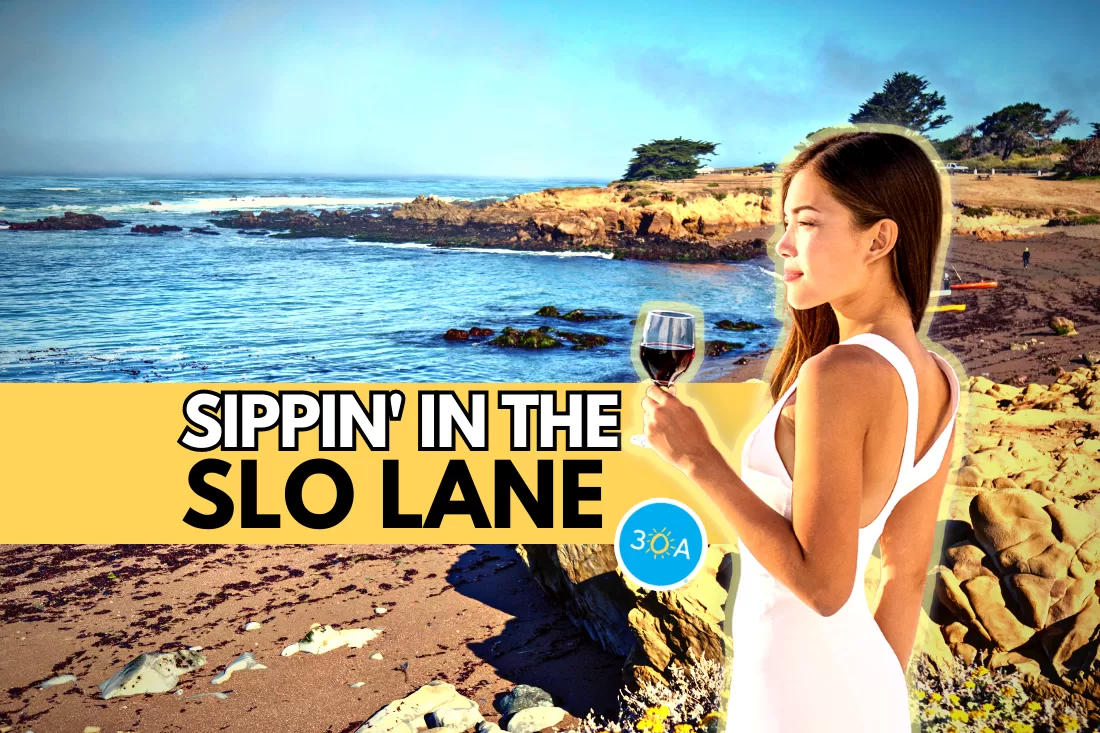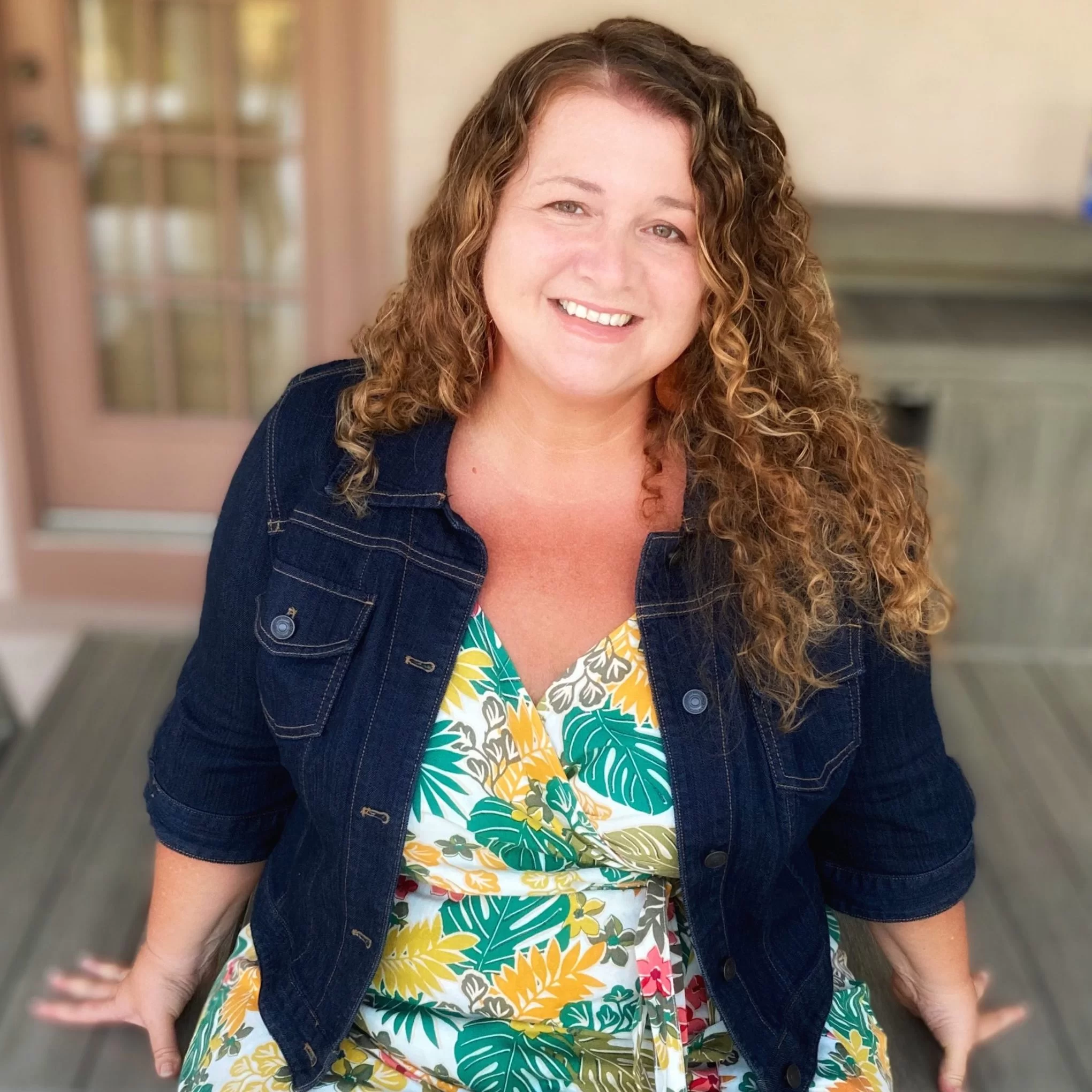Exploring SLO’s Coastal Wine Country: A Journey Along Highway 1
Seaweed foraging, rockhounding, and mineral springs complement California’s newest wine region!
Seaweed foraging, rockhounding, and mineral springs complement California’s newest wine region!

California wine country always leads to talk of Sonoma, Napa, and Russian River, but in 2022, a new American Viticulture Area (AVA) entered the picture. San Luis Obispo (SLO) is often associated with Paso Robles, but this new AVA brings into focus 30 winemakers planting and producing within six miles of the Pacific Coast.
The low temperatures coupled with abundant sunlight, and soils ranging from marine to volcanic, produce wines with vibrant coastal profiles. I hopped in my car and headed to Highway 1 to check it out.
The following was my path, but extensive trip planning resources including where to stay, what to do, and where to eat can be found on the Highway 1 Road Trip website (highway1roadtrip.com).


The first stop was to check in at Sycamore Mineral Springs Resort and Spa in Avila Beach. It sits on 125 acres of meadows and forests with 24 open-air, naturally heated mineral spring hot tubs dotting the hillside. The onsite two-acre chef’s garden seeds the offerings at the Gardens of Avila Restaurant, and the Secret Garden is a tucked-in spot for intimate interludes over the Green Sycamore Bridge.
Tucked away under a canopy of sycamore trees, this spot was discovered in 1886 by oil drillers looking for black gold. What they found was hot mineral water bubbling out of a natural well. Known as healing waters, the property became a spa and a resort, and a popular stop on the Pacific Coast Railway, midway between Los Angeles and San Francisco.
Just a few minutes away from the resort, the Avila Valley Barn serves up hay rides, goat feeding, and scoops of locally made ice cream. The Bob Jones “City to the Sea” bike trail was a welcome stretch for my road-cramped legs as I cycled out to San Luis Pier for a bowl of Mersea’s famous steamer clams overlooking the Pacific Ocean.
Throughout SLO, there are tasting rooms and tours at vineyards such as Sinor-LaVallee in downtown Avila Beach. Mike Sinor walked me through his and his wife Cheri’s journey of growing grapes 1.2 miles from the coast while enjoying Morro Bay oysters at the Shuck Shack paired with their sparkling Pet Nat (the best I’ve ever had). While slurping oysters, I examined the bottles of wine—they all have the fingerprints of Mike, Cheri, and their two kids etched on the front and back. Their DNA heralds the stories in the bottles.
My last day in Avila happened to coincide with their annual Harvest on the Coast Sip and Savor by the Sea festival. I sampled Stephen Ross’s Blanc de Noir (so delicious), Claiborne & Churchill’s Dry Gewurtztraminer, Talley Vineyard’s Rosemary’s Pinot Noir (named after his mother), and many more incredible wines all against the backdrop of the rugged Pacific Ocean.


Just up Highway 1 in Cayucos, Kelpful runs seaweed foraging out of Estero Bluffs. It was cold, but I wasn’t going to miss this opportunity. Our guide, founder Melissa Hanson, walked our group down the cliffs to the beach where we huddled up with some seaweed popcorn to learn about the Chumash tribe who harvested seaweed and seafood here for tens of thousands of years. Hanson handed out a mesh bag and scissors as she went over the species we would come across while foraging.
“I was working in the solar industry at a non-profit when I heard a podcast about kelp farming on the East Coast,” said Hanson. “It checked all my boxes. My dad is an oceanographer. I’ve traveled the world on the water for weeks on end.”
“Feeding myself and my family from the ocean has always been a part of my life.”
I lucked onto a vermillion Turkish Towel and some briny Sea Grass as our fearless leader guided us around the tide pools, being careful of shy octopi and extracting some of the 15-plus varieties of kelp.
“Seaweed foraging offers people a chance to connect with this vital ecosystem and connect to where their food comes from,” said Hanson. “Look at all the varieties of seaweed that can be found right here. I believe as a species, we have to shift how we meet our needs. Seaweed meets that—it heals as it grows,”
After watching the sunset over the rugged cliffs, I headed into town to grab an iconic brown butter sea salt cookie from the Brown Butter Cookie Company to warm my 58-degree Fahrenheit chilled bones post-foraging.


Back in the car, I made my way to Cambria, a small town that eschews anything corporate. Sitting at the end of Moonstone Beach Drive, I found Oceanpoint Ranch. Driving up, the welcoming bonfire and sounds of impromptu guitar pickin’ filled the air. Outdoor lawn games like croquet populated the property, and my room had a wood-burning fireplace for the chilly Central Coast night.
A short drive from the ranch sits Stepladder Creamery. Once you find it (there’s no WI-FI so directions are a must), you enter a world of abundant avocados, winding passionfruit vines, and goats… lots of goats.
Smooth Criminal, the head male goat, watched us carefully as we learned how to milk and make cheese on the 750-acre farm.
Settling down on one of the picnic tables, I dove into samples of their award-winning cheeses. The Pasa Vino soaked in wine from a local vineyard was firm and full-bodied. The Ragged Point, a triple cream named for the gateway to Big Sur, had a beautiful peppery flavor and smooth texture. The Chevre blew them all away. The creamy, tangy cheese changes seasonally—in spring it’s mild, but in the fall it’s tangier and goatier as hormones change in the goats. Paired with a dab of honey made from onsite avocados, it was sublime.
Walking off all that cheese was not a problem in Downtown Cambria. Small boutiques, antique shops, and artist galleries dot Main Street. In Sea + Green, I found a hand-dyed, quilted coat I couldn’t live without and some advice about the infamous moonstones Cambria is known for. Turns out they are actually chalcedony, a form of quartz that resembles the opalescent moonstones. Still beautiful and definitely worthy of a beachcombing outing.
On our way back to the ranch, I had to stop at Linn’s for a piece of their famous olallieberry pie. Back in 1977, the Linns moved to the Central Coast to start a farm. They grew olallieberries, a cross between a blackberry and a raspberry, which they used in the pies they sold at the farmstand. In 1989, they opened Linn’s Restaurant in Cambria’s historic East Village, and people have been flocking here for pie and preserves ever since.
Pie secured, I headed to Moonstone Beach to do a little rockhounding. A storm passed the night before, littering the beach with abundant bits of jade, agate, and the prized moonstones for me to collect. I gathered my precious gemstones and followed the private beach path back to the awaiting bonfire for one last evening of fellowship and music on the ranch.
Just another day in the SLO lane.


